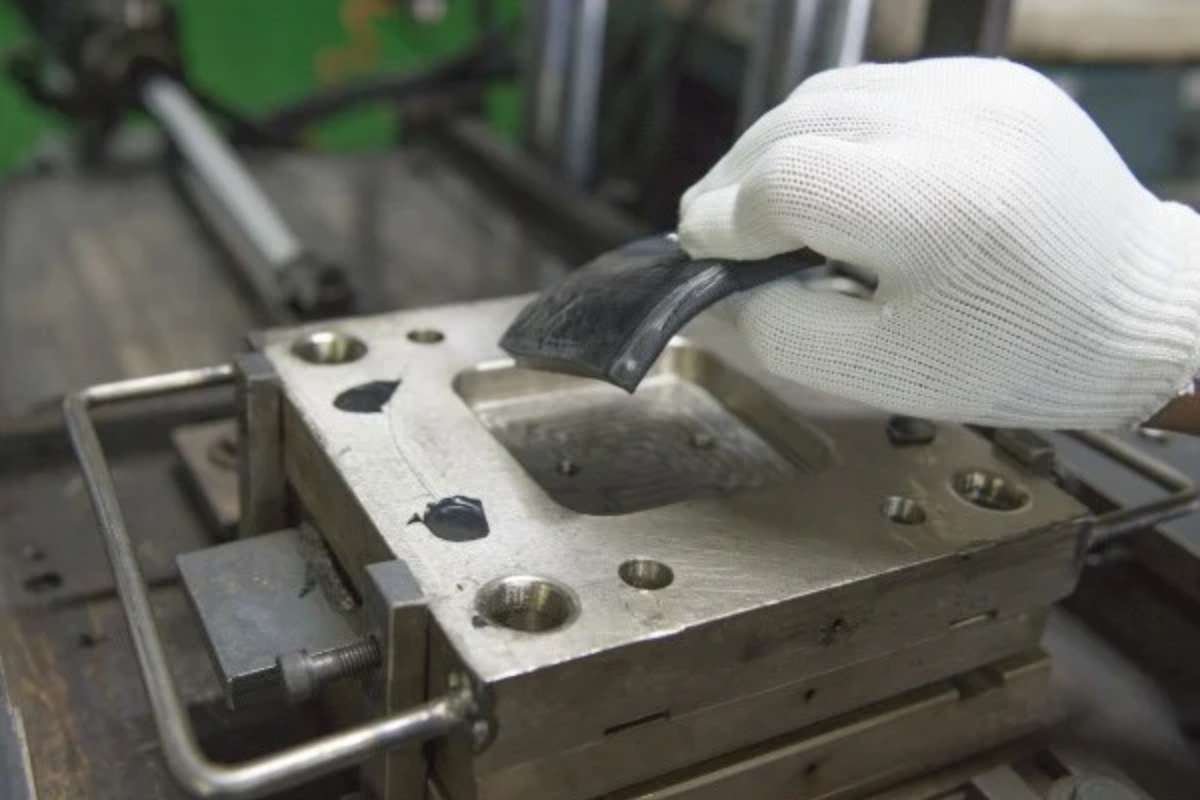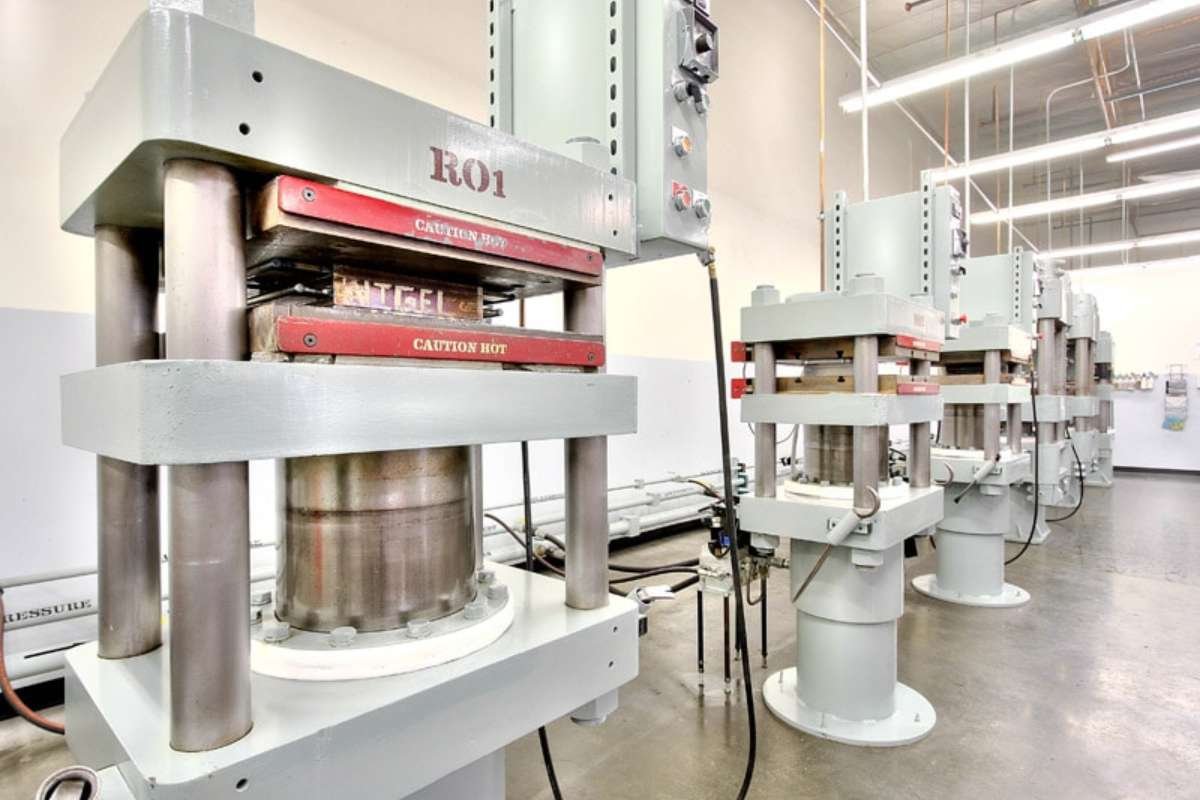The success in manufacturing is judged by its work efficiency, durability, and precision. A technique that offers these qualities is known as compression molding. Their cost-effectiveness and capability of producing high-strength components are among the reasons for their introduction in various industries such as automotive, aerospace, electronics, and consumer goods. Every manufacturer, engineer, or industry enthusiast should understand the fundamentals of compression molding, as it offers a deeper appreciation and knowledge of how everyday products are made. This article will make us aware of the process, advantages, and industries that rely on this technique.
What Is Compression Molding?
Compression molding is a manufacturing process used to create composite parts by placing a pre-measured amount of material, typically a thermoset polymer, into a heated mold cavity. The mold is then closed, and heat and pressure are applied to force the material into the shape of the mold. Once cured, the mold is opened, and the finished part is ejected.
Unlike other molding techniques, such as injection molding or blow molding, compression molding is ideal for producing large, intricate parts with high structural integrity. The process can handle a variety of materials, including fibreglass, carbon fibre, rubber, and plastic compounds, making it a go-to method for fabricating complex components.
A Brief History of Compression Molding
The origins of molding date back to the early 20th century, initially used in the rubber industry for producing tires and seals. As materials science advanced, so did the applications of this molding technique. The introduction of thermoset plastics and composite materials during the mid-1900s expanded their use to the aerospace and automotive sectors. Today, with the growing demand for lightweight yet durable components, it remains as relevant as ever.
The Compression Molding Process Step-by-Step
Understanding the process helps clarify why this method is preferred for many industrial applications. Here’s how compression molding works:
1. Material Preparation
The process begins with preparing the molding material. This can be in the form of pellets, sheets, or preforms, depending on the application and material used.
2. Mold Preheating
The mold is heated to a specific temperature to facilitate the curing process. Temperature settings vary based on the material properties and desired output.
3. Loading the Material
A measured amount of the raw material is placed into the lower half of the heated mold cavity. This step ensures consistent quality and weight in the final product.
4. Mold Closing and Compression
The upper mold half is brought down to close the mold. Hydraulic or mechanical pressure is applied to compress the material, forcing it to fill every part of the cavity.
5. Curing
The applied heat and pressure initiate a chemical reaction that cures or sets the material. This step is crucial for achieving the desired mechanical properties.
6. Cooling and Ejection
After curing, the mold is cooled and opened. The finished part is then removed, often followed by trimming to eliminate any flash or excess material.
Types of Materials Used

One of the strengths of compression molding is its versatility in material usage. Common materials include:
- Thermoset Plastics: Such as phenolic, epoxy, and melamine.
- Elastomers: Including silicone rubber and natural rubber.
- Composites: Fibre-reinforced polymers like fibreglass and carbon fibre.
Each material offers unique properties suited for specific applications—whether it’s heat resistance, flexibility, or tensile strength.
Don’t miss: Types of Molding: An In-Depth Guide
Key Benefits of Compression Molding
Compression molding offers several advantages over alternative manufacturing techniques:
1. Cost Efficiency
Tooling costs are generally lower than those for injection molds, making it ideal for medium to high-volume production runs.
2. High Strength-to-Weight Ratio
Composite materials molded through this process result in strong yet lightweight parts, a crucial factor in industries like aerospace and automotive.
3. Minimal Waste
Unlike machining or other subtractive methods, compression molding generates very little scrap, contributing to both economic and environmental savings.
4. Design Flexibility
It supports complex shapes and intricate geometries, allowing for creative freedom in product design.
5. Consistency and Repeatability
Once the process parameters are established, the technique delivers reliable results with minimal variation from part to part.
Applications Across Industries
The versatility of compression molding lends itself to a wide range of uses across different sectors:
1. Automotive

The method is extensively used to produce hoods, fenders, spoilers, and structural panels. The parts are lightweight yet robust, enhancing fuel efficiency and safety.
2. Aerospace
In aerospace, where weight and performance are critical, compression-molded composite components are favoured for their strength and heat resistance.
3. Electronics
Compression molding is used to encase electrical components, offering excellent insulation and protection from environmental factors.
4. Consumer Goods
From kitchenware to sports equipment, this molding technique allows for ergonomic and durable designs.
5. Medical Devices
In the medical field, the process is employed to manufacture parts that require both strength and biocompatibility, such as prosthetic limbs and orthopaedic supports.
Compression Molding vs. Other Molding Techniques
While compression molding offers several advantages, it’s important to understand how it stacks up against other common molding processes:
| Feature | Compression Molding | Injection Molding | Transfer Molding |
| Tooling Cost | Lower | Higher | Medium |
| Material Waste | Minimal | Moderate | Moderate |
| Cycle Time | Moderate | Fast | Slow |
| Part Complexity | Moderate-High | High | High |
| Suitable Volumes | Medium-High | High | Low-Medium |
Each technique has its place, and the selection largely depends on the production goals, budget, and material specifications.
Challenges and Limitations
No manufacturing process is without its challenges, and compression molding is no exception. Some limitations include:
- Longer Cycle Times: Compared to injection molding, the cycle time can be slower due to the need for heating and curing.
- Labour-Intensive Setup: Accurate placement of materials and mold alignment often requires skilled labour.
- Flash Formation: Excess material can seep out between mold halves, necessitating a trimming step post-molding.
Despite these hurdles, advancements in automation and material science continue to mitigate these issues, making the process more efficient and scalable.
Future Outlook

As industries push for more sustainable, lightweight, and high-performance components, the demand for compression molding is expected to grow. Emerging technologies like 3D preform generation and AI-driven process control are paving the way for faster, more precise molding operations. Furthermore, the push toward recyclable composites and greener materials could position compression molding as a key player in the eco-conscious manufacturing movement.
Conclusion
Compression molding proves to be a dependable, efficient, and versatile manufacturing process. The adaptability across materials and industries is high, whether it’s forming the body panels of electric cars or crafting durable parts for household items. It can be a manufacturer’s choice who is seeking for high-strength, cost-effective, and flexible option. Improvements are possible with the increase in materials and automation advances. A keen knowledge and understanding of compression molding can help companies in the rapid growth of the industrial sector.







